The system is processing. Please wait a moment!
- Home experience homelift & elevator technical Sharing experiences
The Most Detailed Elevator Inspection Standards and Costs
TABLE OF CONTENTS
- What is elevator inspection?
- Purpose of elevator inspection
- What needs to be prepared before inspecting the elevator?
- Standard procedure when inspecting elevators
- Technical standards of elevator inspection process
- How often should an elevator be inspected?
- Elevator inspection costs
- Penalties for failure to inspect elevators
Today, in the continuous development of society, there are more and more high-rise buildings. Therefore, we cannot deny the role of elevators. The elevator inspection process helps ensure safety for users but also keeps the system operating effectively.
This article with Hoang Sa Viet Elevator explores more deeply the standards and costs of elevator inspection , providing a comprehensive view of this process and its importance in elevator safety .

What is elevator inspection?
Elevator inspection is the process of evaluating and confirming safety, performance and compliance with technical standards for elevators prescribed by the State. This process is usually performed periodically to ensure that the elevator operates properly and meets safety requirements.
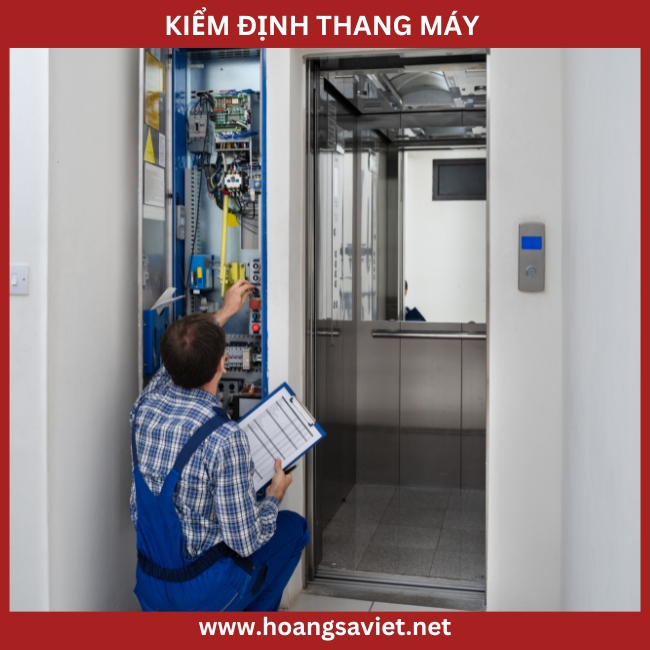
Purpose of elevator inspection
User safety: Ensuring that elevators operate safely for users is one of the main purposes of reducing the risk of accidents and protecting users.
Compliance with technical and legal standards: Elevator inspections help prevent incidents and ensure that elevators meet regulatory and safety agency technical requirements.
Periodic maintenance and inspection: The elevator inspection process is often accompanied by periodic maintenance and inspection. This helps detect potential problems early, avoid sudden breakdowns and keep the elevator operating stably.
Besides, elevator safety inspection can also help managers reserve periodic maintenance costs rather than having to deal with major incidents and unexpected repair costs.
Increased longevity and performance: By regular inspection, elevator systems can be maintained for stable operation and increased longevity.
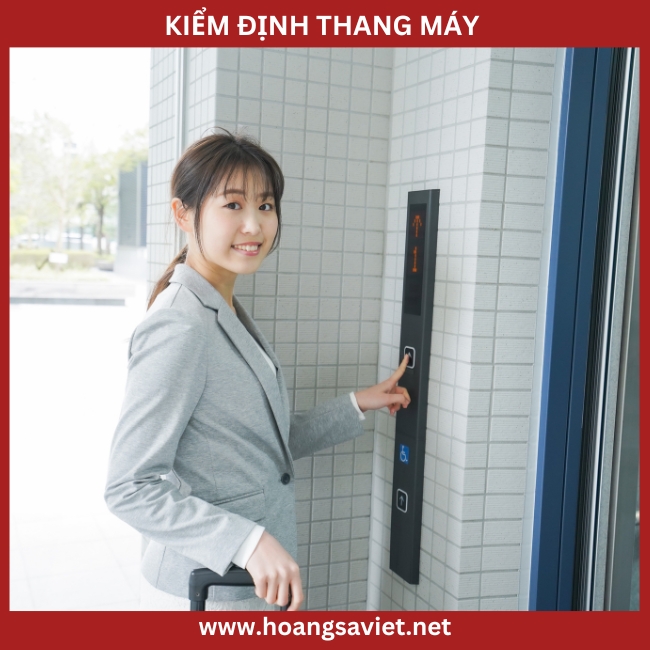
What needs to be prepared before inspecting the elevator?
In Article 7, the elevator safety technical inspection process under the management authority of the Ministry of Labor, War Invalids and Social Affairs issued with Circular 12/2021/TT-BLDTBXH stipulates:
Prepare for inspection
The inspection organization and the facility requesting inspection shall coordinate:
Thống nhất kế hoạch kiểm định, chuẩn bị các điều kiện phục vụ kiểm định và cử người tham gia, chứng kiến kiểm định.
Thống nhất thực hiện các biện pháp đảm bảo an toàn;
Trang bị đầy đủ dụng cụ, phương tiện bảo vệ cá nhân, đảm bảo an toàn trong quá trình kiểm định.
Cơ sở đề nghị kiểm định:
Chuẩn bị hồ sơ, lý lịch và các tài liệu có liên quan đến thang máy được nêu tại khoản 1 Điều 8 quy trình này gồm:
Lý lịch thang máy: Thông tin chung về thang máy, đặc tính kỹ thuật (tính năng, tải trọng, vận tốc,…), các bản vẽ kỹ thuật…
Giấy chứng nhận hợp quy (kiểm tra đối với trường hợp kiểm định lần đầu).
Giấy chứng nhận kiểm định, biên bản kiểm định đã được cấp (không kiểm tra đối với trường hợp kiểm định lần đầu).
Hồ sơ bảo trì, bảo dưỡng, sửa chữa, thay thế (nếu có)
Hồ sơ thiết kế, hoàn công xây dựng giếng thang (kiểm tra đối với thang máy lắp đặt, kiểm định lần đầu).
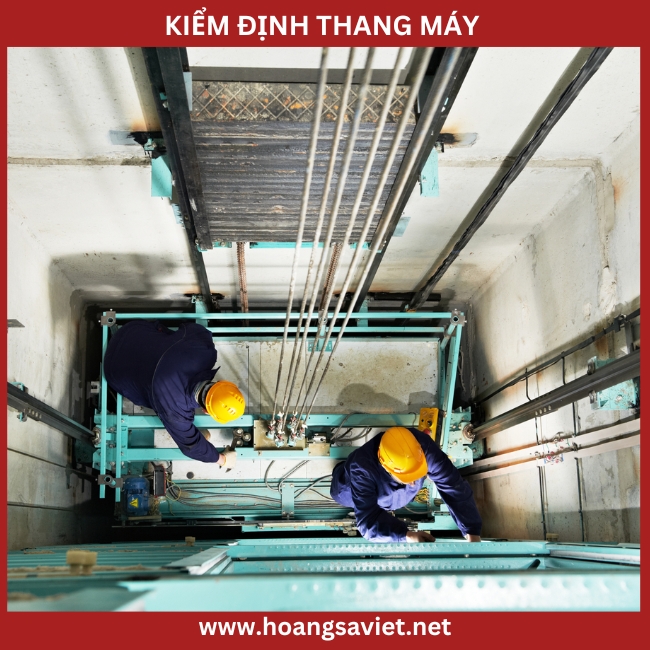
Các dụng cụ cần để kiểm định thang máy
Trước khi tiến hành kiểm định thang máy cần chuẩn bị những thiết bị kiểm tra sau:
Thiết bị đo khoảng cách
Thiết bị đo nhiệt độ
Thiết bị đo cường độ ánh sáng
Thiết bị đo điện trở cách điện
Thiết bị đo điện trở tiếp địa
Thiết bị đo điện vạn năng
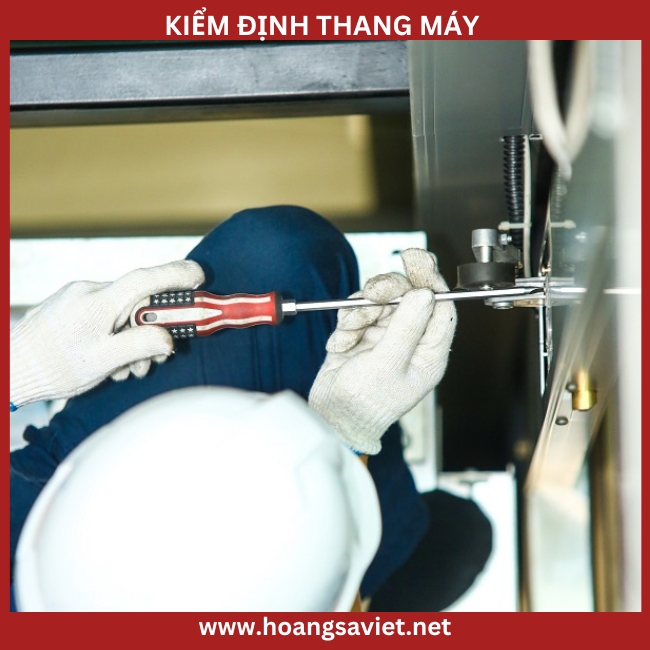
Độ chính xác của các dụng cụ đo cho phép có độ sai lệch như sau, trừ khi có yêu cầu cụ thể khác:
± 1 % đối với khối lượng, lực, khoảng cách, tốc độ
± 2 % đối với gia tốc, gia tốc hãm
± 5 % đối với điện áp, dòng điện
± 5 % đối với nhiệt độ
± 2,5 % đối với lưu lượng
± 1 % đối với áp suất P ≤ 200 kPa
± 5 % đối với áp suất P > 200 kPa
( Nguồn: Theo Thư Viện Pháp Luật )
Quy trình chuẩn khi kiểm định thang máy
Quy trình kiểm định thang máy cần được thực hiện bởi chuyên viên kiểm định qua các bước sau:
Bước 1: Kiểm tra hồ sơ kỹ thuật của thang máy
Kiểm tra thông tin lý lịch thang máy: thông tin chung của thang máy ( nguồn gốc xuất xứ, vận tốc, bản vẽ kỹ thuật, tải trọng, hồ sơ kết quả kiểm định lần trước, hồ sơ lắp đặt, nhật ký bảo hành,bảo trì, hướng dẫn sử dụng thang máy,…)
Giấy chứng nhận phải phù hợp với quy chuẩn của Bộ Lao động – Thương binh và Xã hội chỉ định hoặc thừa nhận.
Hồ sơ bảo dưỡng, sửa chữa, thay thế, cải tạo và biên bản nghiệm thu sau cải tạo (đối với kiểm định thang máy có sự cố bất thường).
Hồ sơ thiết kế, hoàn công xây dựng giếng thang (áp dụng đối với thang máy mới lắp đặt và kiểm định lần đầu).
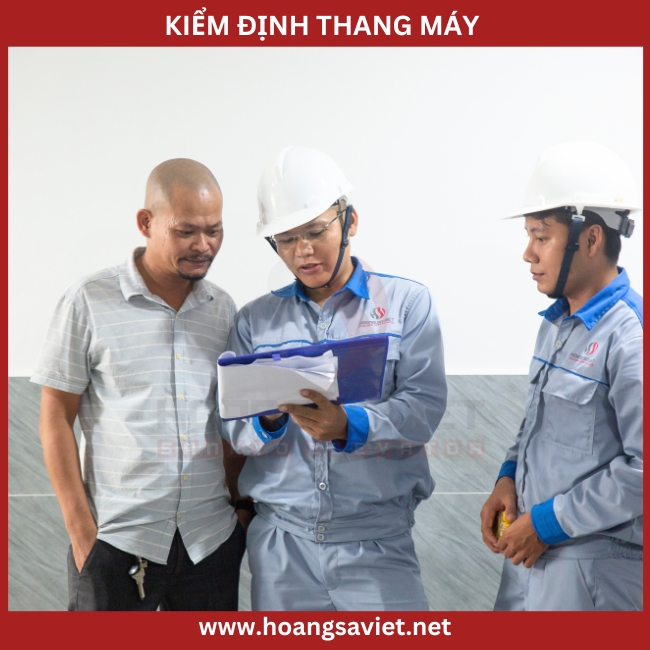
Bước 2: Tiến hành kiểm tra kỹ thuật
Kiểm tra chi tiết tình trạng hoạt động của tất cả bộ phận cabin, giếng thang, hố thang, cửa thang, puli, cáp, đối trọng, buồng máy,..
Kiểm tra phần điện của thang máy ( bảng điện, đường nối điện, công tắc điện trong buồng máy… )
Hệ thống điều khiển
Hệ thống cứu hộ
Kiểm tra tính hao mòn, đồng bộ của các chi tiết, bộ phận.
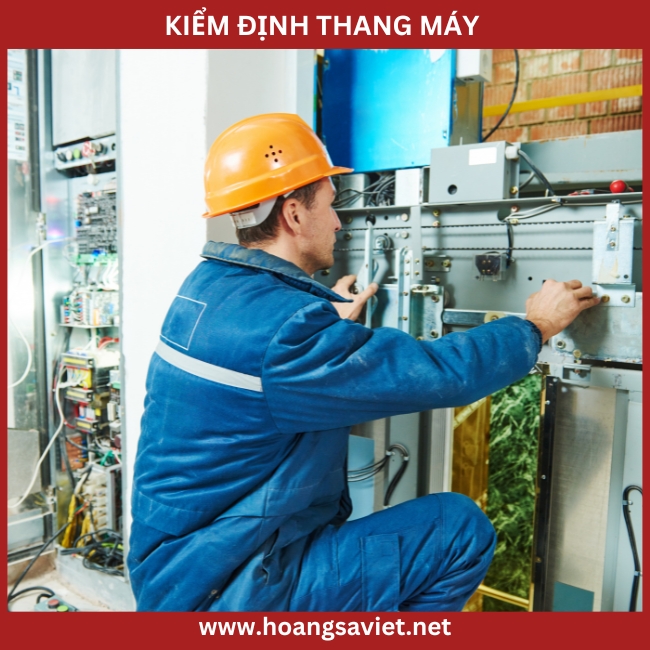
Bước 3: Vận hành thang máy
The next step in the elevator inspection process is to test operating the elevator under many different operating conditions.
Test run the elevator without load by pressing the buttons on the control panel, helping to accurately assess the performance of the device such as motor, brake, stop and start, etc.
Test run the elevator with the load tested sequentially with 100% of the rated load, 125% of the rated load to see the elevator's response, to more accurately check the overload parts, buffers, accuracy stopped the elevator floor...
Try rescue kits and rescue alarm devices.
Check the overload limiting device.
Test the elevator's dampers, pressure and special operating programs.
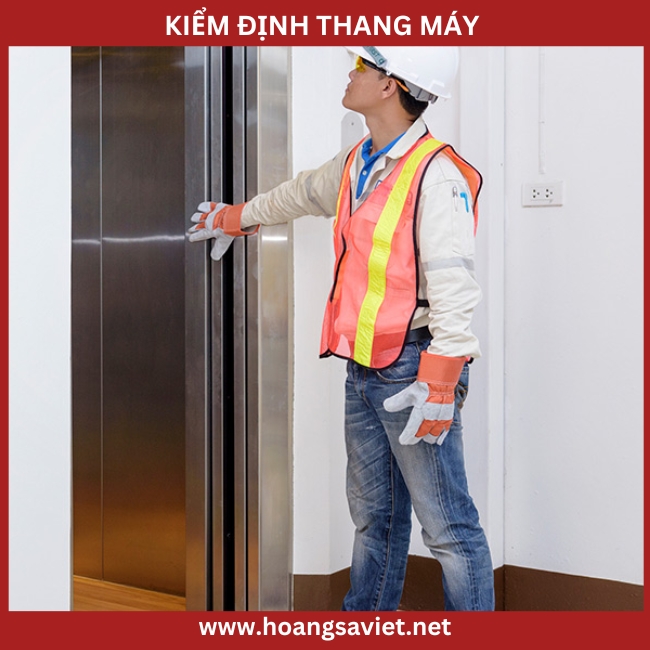
Step 4: Process inspection results
Prepare an inspection record according to the form and submit it to the inspection agency
Record the inspection results and background of the elevator.
Issue certificates and affix elevator inspection stamps .
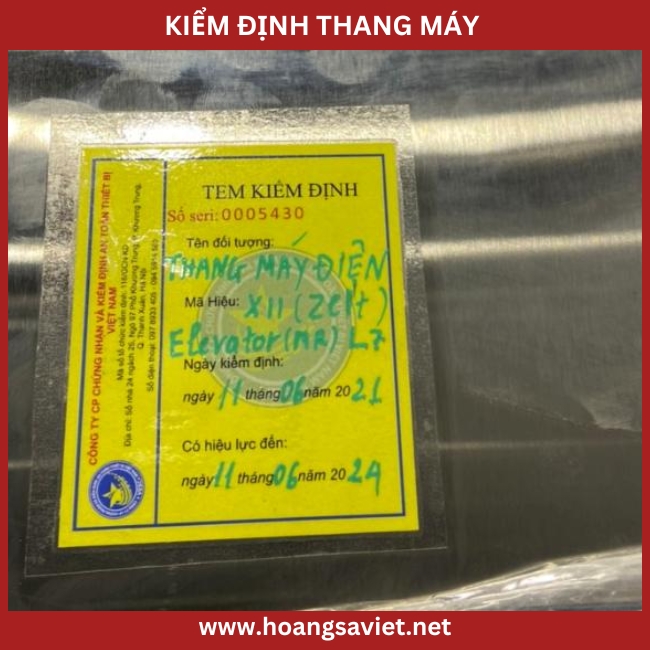
Technical standards of elevator inspection process
According to Circular 36/2019/TT-BLDTBXH promulgating the list of machines, equipment, materials and substances with strict requirements on occupational safety and hygiene effective from March 1, 2020, specifically as follows:
- QCVN 02:2011/BLDTBXH: National technical regulation on labor safety for electric elevators;
- QCVN 26:2016/BLDTBXH: National technical regulations on occupational safety with cabless electric elevators;
- TCVN 6395:2008: Electric elevators - safety requirements for structure and installation;
- TCVN 7628:2007 (ISO 4190): Elevator installation;
- TCVN 5867: 2009: Elevators, cabins, counterweights and guide rails. Safety requirements;
- TCVN 9358: 2012: Installation of equipment grounding systems for industrial projects - General requirements;
- TCVN 9385:2012: Lightning protection for construction works - Instructions for system design, inspection and maintenance.
.jpg)
How often should an elevator be inspected?
In Article 9 of the elevator safety technical inspection process under the management authority of the Ministry of Labor, War Invalids and Social Affairs issued with Circular 12/2021/TT-BLDTBXH, it is stipulated:
The period of periodic safety technical inspection for elevators installed in apartment buildings, offices, shopping centers, hospitals, hotels, manufacturing plants or in public areas is 2 years. once.
The period of periodic safety technical inspection for elevators installed in projects other than the above mentioned projects is every 3 years.
The period of periodic safety technical inspection for elevators that have been in use for more than 15 years is once every 1 year.
- Based on the condition of the equipment, the prescribed time limit for elevator inspection can be shortened by the inspector's decision on the basis of agreement with the organization or individual that owns or manages the elevator.
In case of shortening the technical safety inspection period, the inspector performing the inspection must clearly state the reason for the shortening in the inspection record.
(Source: According to the Law Library)
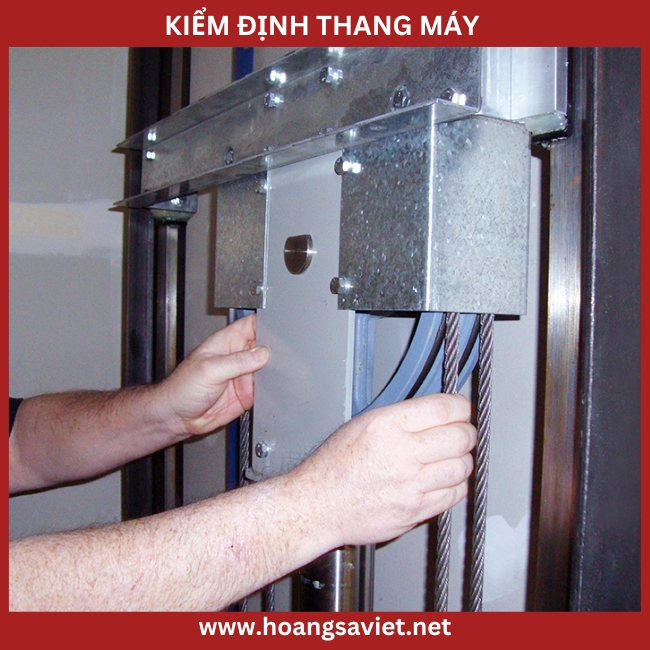
Elevator inspection costs
For the first inspection of an elevator, the elevator inspection cost will be paid by the elevator installation company, and subsequent times will be paid by the elevator owner.
The price of elevator inspection also depends on the location as well as the number of elevators and type of elevator that the customer requests to be inspected, so the inspection cost may vary from place to place and ranges from 2 million to 5 million. copper.
According to Decision No. 11/QD - KD issued on February 27, 2017 of the Center for Safety Technical Inspection Region III, elevator inspection costs are as follows:
For elevators from 10 floors or less: cost 2,000,000 VND/elevator.
For elevators from 10 floors to 20 floors: cost 3,000,000 VND/elevator.
For elevators over 20 floors: cost is 4,500,000 VND/elevator.
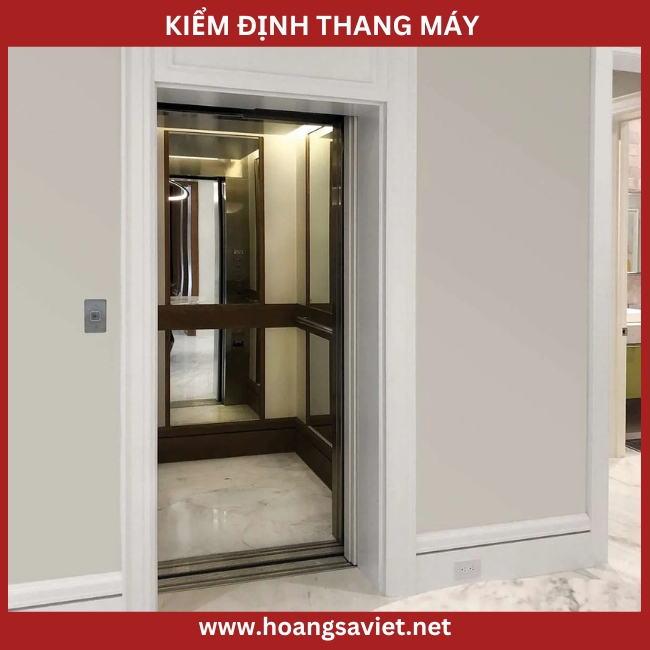
Penalties for failure to inspect elevators
In Clause 5, Article 17 of Decree No. 95/2013/ND - CP, it is stipulated that in cases where elevators do not pass inspection and are put into use, they will be fined according to the following levels:
Fine from 1,000,000 VND to 3,000,000 VND for not reporting the inspection to the inspection agency.
Fine of 5,000,000 VND to 7,000,000 VND when putting an elevator into use without notifying the inspection agency.
Fine from 50,000,000 VND to 75,000,000 VND when using an elevator that has been inspected but does not meet the requirements.

Hopefully, through the article that Hoang Sa Viet Sankyo Elevator just shared, it will help you better understand the regulations related to elevator inspection .
✅ Hoang Sa Viet Elevator - Installation, Maintenance, Renovation of Vietnamese Quality Elevators
HOANG SA VIET ELEVATOR - LEADING PRESTIGIOUS ELEVATOR COMPANY IN VIETNAM
Consulting Specialist: 0942. 222. 075
Head Office: 184/20 Le Dinh Can, Tan Tao Ward, City. HCM
Hanoi headquarters: No. 229, D. Van Tri, Van Noi, Dong Anh, Hanoi
Website : hoangsaviet.net Email: hungpham@hoangsaviet.com



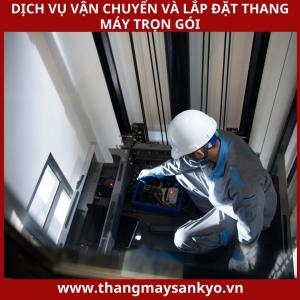
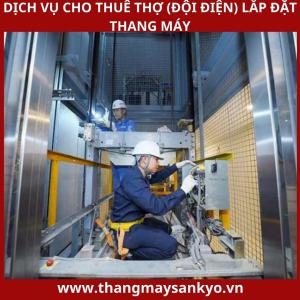
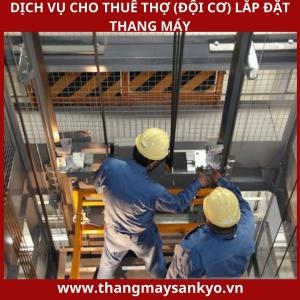

.png)
.png)

.png)












